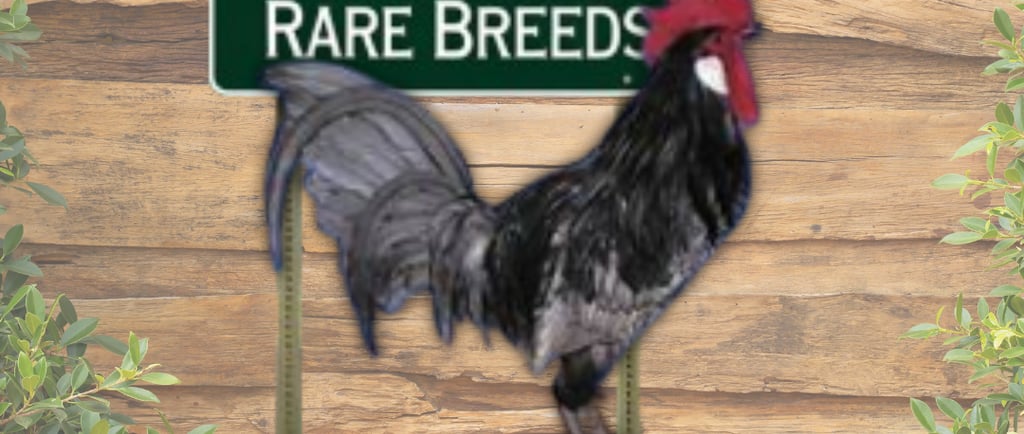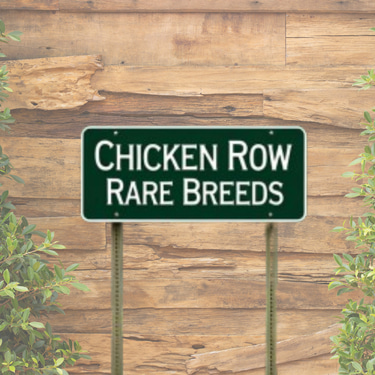Blue Andalusian
A rare Spanish heritage breed with striking blue plumage and reliable eggs
8/22/20252 min read


🐓 Andalusian: The Rugged Blue Egg Layer
Known for its striking slate-blue plumage and hardy nature, the Andalusian chicken is a Mediterranean breed with deep roots in Spain. While its exact origins are uncertain, it is thought to have developed from local landrace chickens, including the Black Castilian, bred together with other Spanish varieties. Today, the Andalusian is prized for its productivity, beauty, and rugged ability to thrive on the range.
📜 A Brief History
Andalusian chickens were first imported from Xeres de la Frontera in Andalusia, Spain, by Leonard Barber in 1846–47. More birds were brought to England in 1851 by Mr. Coles and John Taylor, though these early imports had a paler “washed-out” blue than the deep lacing we see today. English breeders refined the color and exhibited the breed at London’s Baker Street Show in 1853.
The breed reached America between 1850 and 1855 and was officially recognized as the Blue Andalusian in the American Poultry Association’s Standard of Perfection in 1874.
📌 Breed Snapshot
Status: Heritage breed
Use: Eggs (light meat utility)
Egg Production: 160–200 eggs per year
Egg Size & Color: Medium to large; white
Weight: Roosters 7 lbs; Hens 5.5 lbs
Temperament: Active, not pet-like, can bully in confinement
Characteristics: Slate-blue plumage, Mediterranean type, hardy foragers
🐓 Why Choose an Andalusian?
Excellent Layers
Andalusians are strong producers, laying 160–200 white eggs each year. They are reliable even in winter and rarely go broody.
Hardy and Rugged
This breed is built for foraging and free-range living. They are hardy in a variety of climates, including cold, though they perform best in warmer regions.
Beautiful Plumage
The Andalusian’s blue feathers laced with darker blue or black are their most distinctive feature. Their slatey sheen makes them one of the most eye-catching Mediterranean breeds.
Quick Maturing
Chicks feather quickly, and young roosters can be crowing by seven weeks of age.
🛠️ Care Considerations
Space Needed – Andalusians dislike confinement and may feather-pick if crowded.
Foragers First – Best suited for free-range systems where they can roam and scratch.
Temperament – They are not aggressive with people but aren’t “lap chickens.” In tight quarters, they may bully other breeds.
Noise – Not overly noisy, but roosters have a strong crow, so not ideal for sensitive neighbors.
Climate – While hardy in cold, they thrive best in warmer regions like their native Spain.
🧬 Appearance at a Glance
Plumage
Blue ground color with dark blue/black lacing
Produced by breeding black and white lines (25% black, 50% blue, 25% white/splash offspring)
Head & Comb
Single bright red comb with 5 points on roosters
Medium to large single comb on hens (often flops to one side)
Other Features
White, oval earlobes
Horn-colored downward curving beak
Black or slate blue legs
Reddish-brown eyes
Roosters: 7 lbs; Hens: 5.5 lbs
🧡 Heritage and Conservation
The Blue Andalusian has long been a favorite among poultry fanciers and is recognized in the U.S. and U.K. as a classic Mediterranean egg layer. Though not as common as commercial breeds, Andalusians remain an important part of the Heritage Chickens Conservation Priority List.
🧠 Final Thoughts
The Andalusian is a breed for those who value productivity, resilience, and striking beauty. They aren’t the best choice if you want a cuddly backyard pet, but for farms or homesteads where chickens can range freely, the Andalusian is a reliable and eye-catching egg producer.
Their rugged build, Mediterranean heritage, and year-round egg laying make them one of the most dependable — and beautiful — heritage chickens around.
Did You Know?
When two Blue Andalusians are bred, their offspring won’t all be blue. About 25% will be black, 50% blue, and 25% splash (white with blue or black spots). Breeders carefully use these variations to keep the classic laced blue color strong.
